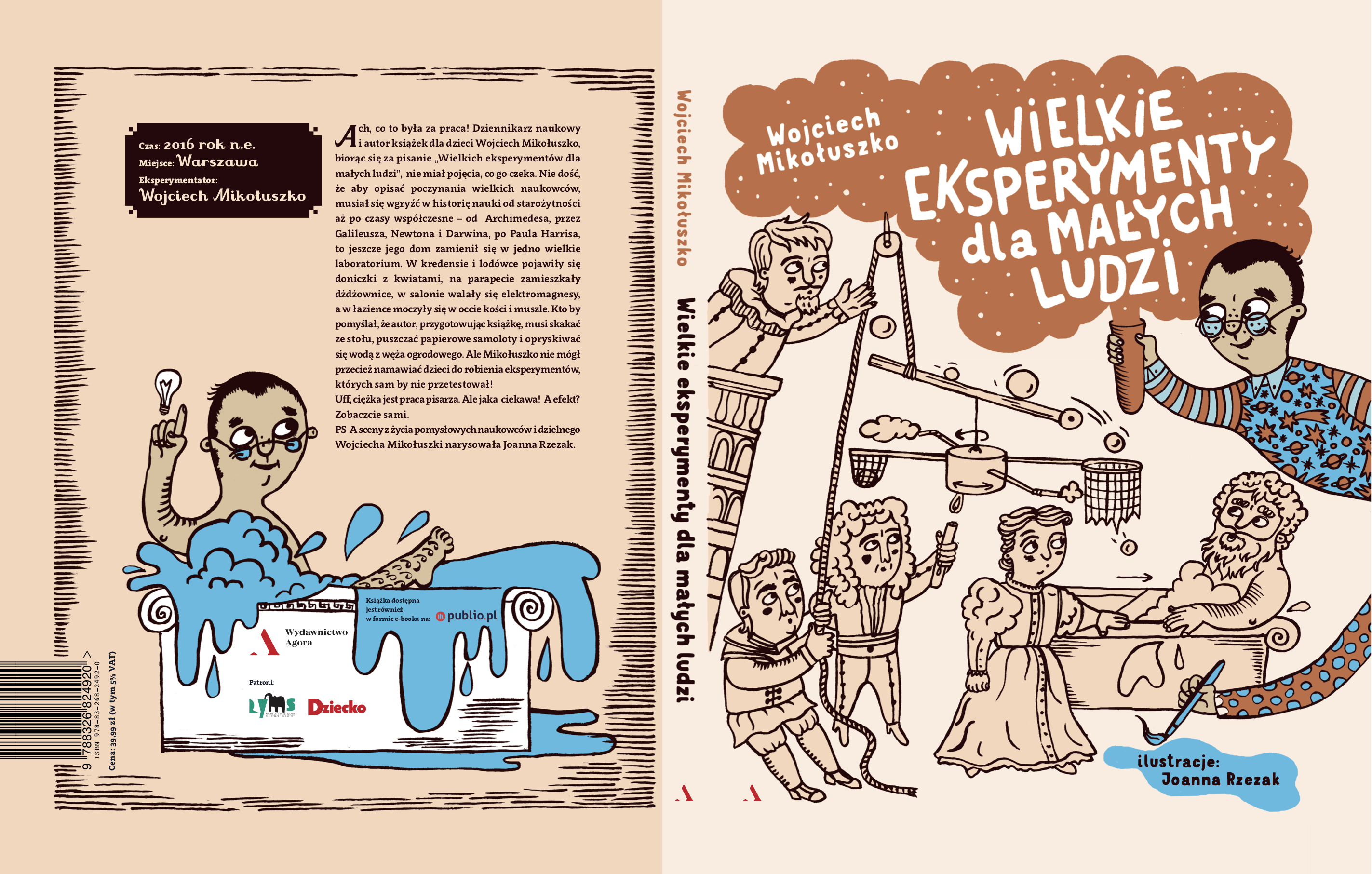Title of the work
Country of the First Edition
Country/countries of popularity
Original Language
First Edition Date
First Edition Details
Wojciech Mikołuszko, Wielkie eksperymenty dla małych ludzi, ill. Joanna Rzezak. Warszawa: Wydawnictwo Agora, 2016, 168 pp.
ISBN
Genre
Illustrated works
Instructional and educational works
Target Audience
Children
Cover

Courtesy of the publisher.
Author of the Entry:
Krzysztof Rybak, University of Warsaw, rybak.km@gmail.com
Peer-reviewer of the Entry:
Elżbieta Olechowska, University of Warsaw, elzbieta.olechowska@gmail.com
Elizabeth Hale, University of New England, ehale@une.edu.au
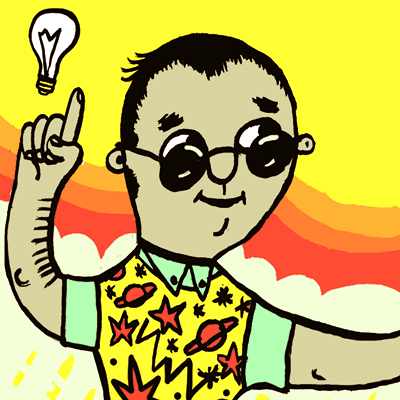
Portrait by Joanna Rzezak. Courtesy of Wojciech Mikołuszko.
Wojciech Mikołuszko
, b. 1974
(Author)
Wojciech Mikołuszko (1974) graduated in biology, geology, and paleontology at the University of Warsaw, Poland. He was also a student of Szkoła Reportażu [School of the Documentary] at the Collegium Civitas in Warsaw (currently Postgraduate Studies at the Laboratory of the Documentary, Faculty of Journalism, Information and Book Studies, University of Warsaw). For some time he worked at the Polish Academy of Sciences Museum of the Earth in Warsaw, but from 2000 he has been working as a journalist and author focused on promoting science among both adults and children. He published such books as Wielkie pytania małych ludzi [Great Questions of Small People], Wielkie eksperymenty dla małych ludzi [Great Experiments for Small People] and series with Tata [Dad]: Tato, a dlaczego? [Dad, why?]; Tato, a po co? [Dad, what for?]; Z tatą w przyrodę [With Dad into Nature], Z tatą na dinozaury [With Dad Looking for Dinosaurs]. He was also a co-author of textbooks for elementary schools called Tropiciele [Trackers]. He has two blogs: adlaczego.blogspot.com and wprzyrode.blogspot.com. More on Mikołuszko at his official page: mikoluszko.com (accessed: January 10, 2019).
Bio prepared by Krzysztof Rybak, University of Warsaw, rybak.km@gmail.com
Questionnaire
1. What drew you to working with Classical Antiquity and what challenges did you face in selecting, representing, or adapting particular myths or stories?
My book is about science and science – as we know it today – started in ancient Greece. Then it was part of philosophy (and I regret that now philosophy and science are separated). So it was obvious to me that I have to describe a story from the ancient time. Also Archimedes was an obvious choice since he is considered today the father of experimental sciences and this particular book was devoted to experiments. Until today his exclamation "Eureka!" is a symbol of making a discovery – especially through experiments – and is used in science all over the world.
2. Why do you think classical / ancient myths, history, and literature continue to resonate with young audiences?
I write about science for kids. And as I said before – the roots of modern science are in the classical history. When the modern science emerged in 17th century the researchers struggled with classical opinions – both in good and bad meaning of the terms. They "inherited" the logic and basic concepts of ancient Greece and Rome but they had to discard false beliefs of Aristotle or Galen of Pergamon. It took them a lot of time and effort. Also the ancient history is full of interesting stories that can make kids engaged in science – like naked Archimedes running through the town and shouting "Eureka! Eureka!". It is funny and children feel lots of emotions reading it.
3. Do you have a background in classical education (Latin or Greek at school or classes at the University?) What sources are you using? Scholarly work? Wikipedia? Are there any books that made an impact on you in this respect?
No, I don't have such a background. I use both internet sources and books. Of course, I do use Wikipedia but as a starting point and then verify the information. For writing the story about Archimedes I used: (1) Księga odkryć [Book of Discoveries] (1987) by Bolesław Orłowski and Zbigniew Przyrowski, (2) Technika [Technology] by Bolesław Orłowski (published by Ossolineum in 1999), (3) Historia nauk przyrodniczych w zarysie [An Illustrated History of Science] by F. Sherwood Taylor from 1955.
4. Did you think about how Classical Antiquity would translate for young readers, esp. in Poland?
I have no opinion on that for now. I would have to think it over.
5. How concerned were you with "accuracy" or "fidelity" to the original? (another way of saying that might be—that I think writers are often more ‘faithful’ to originals in adapting its spirit rather than being tied down at the level of detail—is this something you thought about?)
I am concerned but I am not able to verify the original sources. I used books by good historians of science and I trusted them. However, I am aware that also they could use "secondary" sources. I appreciate prof. Bolesław Orłowski a lot, I used to know him personally, but I doubt if he spoke Greek – but I haven't checked it, to be honest.
6. Are you planning any further forays into classical material?
Now I am not working on any such a story. Maybe if I write another book about the history of science I would include some classical material.
Prepared by Krzysztof Rybak, University of Warsaw, rybak.km@gmail.com

Joanna Rzezak (Illustrator)
Joanna Rzezak (1988– ) is a graphic designer and illustrator living in Paris. She graduated from the Academy of Fine Arts in Warsaw and from the Faculty of Architecture, Warsaw University of Technology. As well as working on editorial design, brand identity and webpage design, she has illustrated a few children’s books, including Pionierzy czyli poczet niewiarygodnie pracowitych Polaków [Pioneers or the Fellowship of Unbelievably Hard-Working Poles] from 2013 by Marta Dzienkiewicz (with illustrations also by Piotr Karski, with whom Rzezak funded the graphic studio kapitanstudio.pl, accessed: January 20, 2019) and Bozie czyli jak wygląda Bóg? [Little Gods or what God looks like?] from 2016 by Karolina Oponowicz. Rzezak's works were displayed for example in Bologna Ragazzi Opera Prima exhibition (2014), International Poster Biennial in Warsaw (2010, 2014), and International Poster Biennial in Mexico (2011). In 2016 she received a grant from the Polish Ministry of Culture for artistic achievements. She was also honourably mentioned for Pionierzy [Pioneers] during City of Warsaw literature prize and Festival of Children’s Literature in Cracow. More on Rzezak’s official page: rzezak.pl (accessed: January 20, 2019).
Bio prepared by Krzysztof Rybak, University of Warsaw, rybak.km@gmail.com
Summary
This illustrated non-fiction children’s book presents many famous experiments from the history of the World. Its author – Wojciech Mikołuszko – becomes a guide to past times from ancient Greece to modernity (the last entry is dedicated to the 1991 psychological experiment of Paul Harris, who investigated children and their ability to distinguish fantasy from reality). Each of the 21 chapters is divided into two parts: the former presents historical context of the experiment and the latter consists of basic experiments that readers can do at home. Among many figures, Galileo Galilei, Isaac Newton, Louis Pasteur and their discoveries are discussed. Besides the do-it-yourself experiments at the very end, the young reader can invent her or his own experiment and describe it, remembering not to harm people or animals and prevent degradation of the natural environment!
The only ancient historical figure listed in the book is Archimedes of Syracuse (c. 287–c. 212 BC) and the principle named after him as well as general laws of physics fundamental to fluid mechanics. He is also the very first figure presented in the book in the chapter entitled Naukowiec na golasa, czyli jak w wodzie zmienia się ciężar [Naked Scientist Or How Weight Changes In Water]: "With an adult man who ran in the public streets naked scientific experiments began" (p. 14). In this part "Heureka!" / "Eureka!" (Gr. Εὕρηκα, "I found [it]") is introduced as a symbol of significant discovery, but naturally before Archimedes some discoveries were made, even though people did not name them this way. Finally Archimedes’ experiment and discovery is presented: king Hiero of Syracuse asked him to investigate the purity of a golden crown – he had given his goldsmith the pure gold to be used, and later suspected he had been cheated by the goldsmith removing a part of the gold and adding the same weight of silver. The philosopher put it into the water and proved that is was made of an alloy of gold and silver and not one pure precious metal as its density was different pure gold. As writes Mikołuszko, that was not only the famous discovery later named Archimedes’ principle, but also a significant signal that experimenting is an important part of discoveries.
Analysis
Wielkie eksperymenty dla małych ludzi is a worth noting work of children’s non-fiction, a significant trend in contemporary literature for young readers. Especially in Poland – homeland of Aleksandra Mizelińska and Daniel Mizielińśki’s Mapy [Maps] a global phenomenon with more than 30 foreign editions – non-fiction for children is doing very well. Even though it is not a massive piece of a book (as Maps or Pszczoły [The Books of Bees] and Drzewa [The Book of Trees] by Piotr Socha and Wojciech Grajkowski are), its value is easy to spot. Not only the author presents more or less known historical figures – among them only one ancient ‛scientist’ Archimedes – but also guides young readers through the fascinating world of science and presents four experiments that can be attempted at home by the readers: 1) Co tonie, co pływa? [What Sinks, What Floats?] 2) Ile wody wypłynie? [How Much Water Will Pour Out?] 3) Plastelinowa łódka [Play Dough Boat] 4) Kiedy pływa, kiedy tonie? [When It Floats, When It Sinks?]. The important part in each experiment segment is the final statement Zrozum swój eksperyment [Understand your experiment], in which all the empirical observations are described theoretically. This practical approach towards presenting science to young readers is rather less popular than simply encyclopedia-like descriptions, tableaus, graphs etc., as it seems to engage the child both in the topic and the reading itself.
Mikołuszko’s book is an interesting and important contribution to presenting STEM (Science, Technology, Engineering, Mathematics) and figure of a scientist in children’s literature. All the characters depicted in Wielkie eksperymenty dla małych ludzi are rather eccentric. Archimedes is easily remembered not only as he is the very first to appear in the book, but also as he runs naked – can there be anything more extravagant? Archimedes may be seen as one of the best know scientific figures from ancient times, because of the amusing story of Eureka – in English, the word for running naked is ‘streaking’, so there are a lot of plays on the rhyme between Eureka and streaker.*
Illustrations are as interesting as the text itself. Joanna Rzezak’s works are comic, presenting ancient times and figures in a caricatural way, at the same time presenting the experiments as simply as possible to help the reader understand all the discoveries. One of her great concepts was to present the narrator – who may be identified with the author himself – taking a bath just as Archimedes did! This way both in the chapter (p. 18) and on the back cover, one can see Wojciech Mikołuszko in a bathtub. Also Mikołuszko himself uses an illustration made by Rzezak as his official portrait.
Addenda
Radio interview with Wojciech Mikołuszko about his non-fiction books, including Wielkie eksperymenty dla małych ludzi (in Polish), accessed: January 10, 2019.
The illustrations (Courtesy of the publisher):
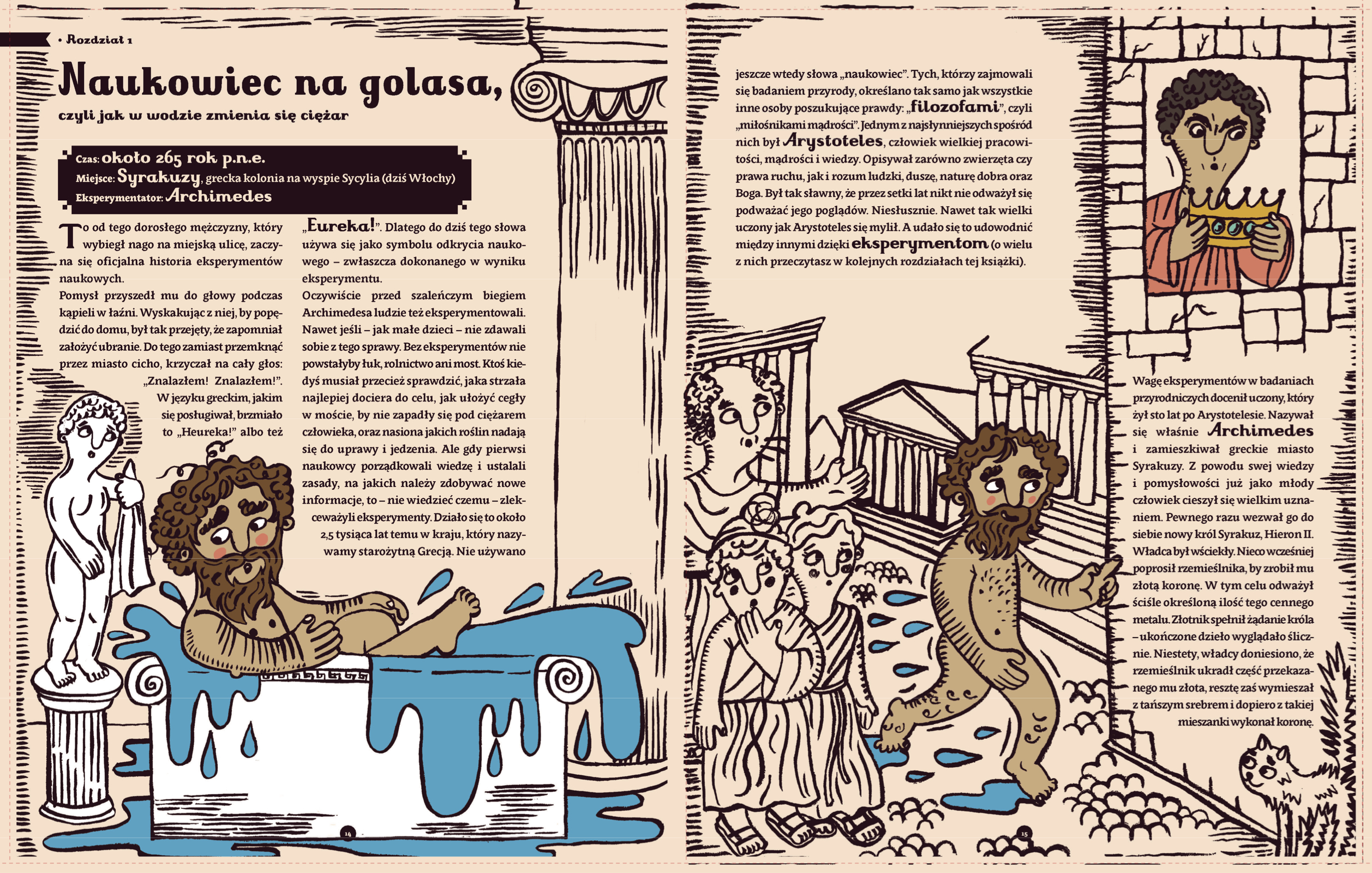
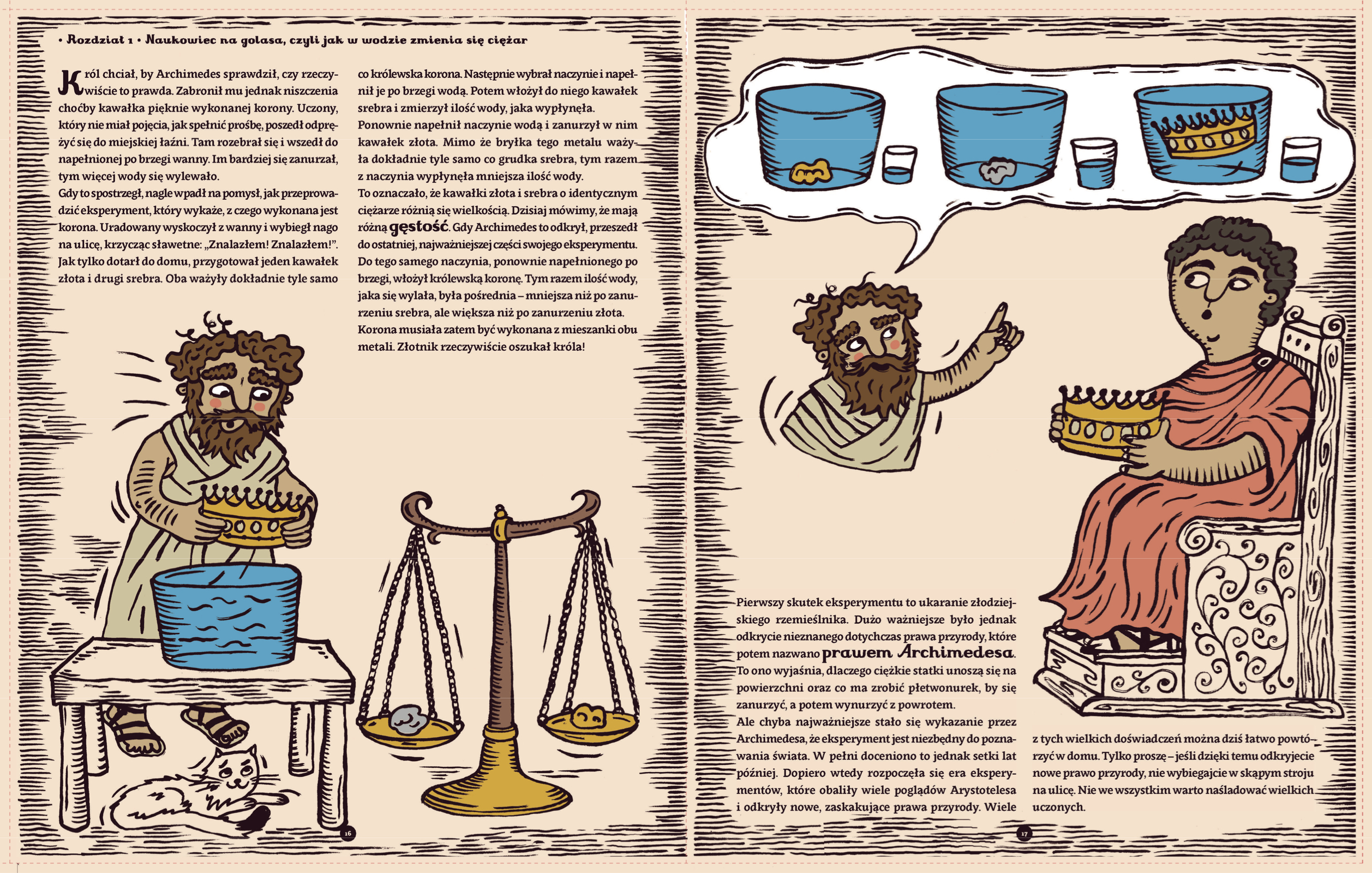
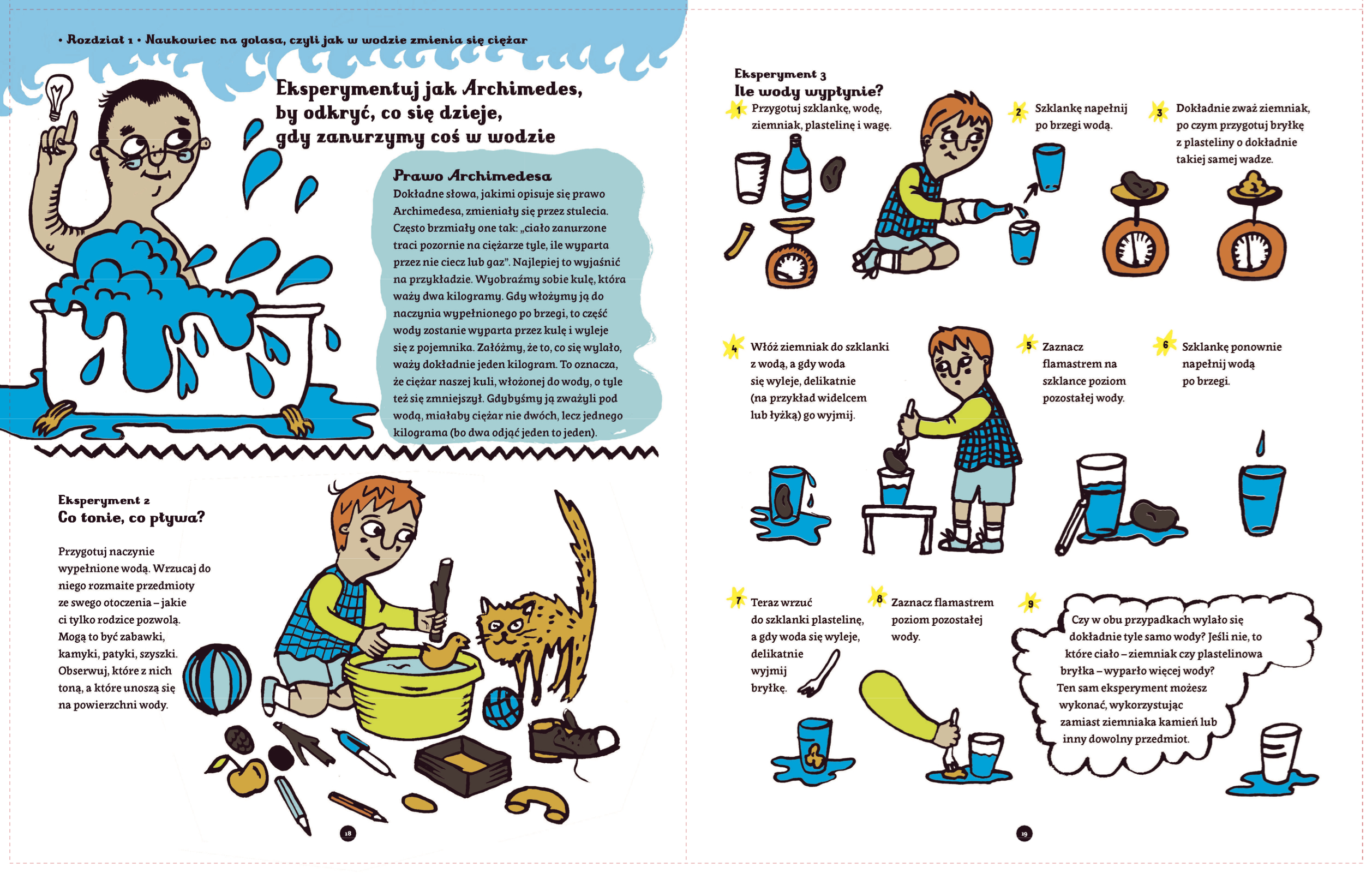
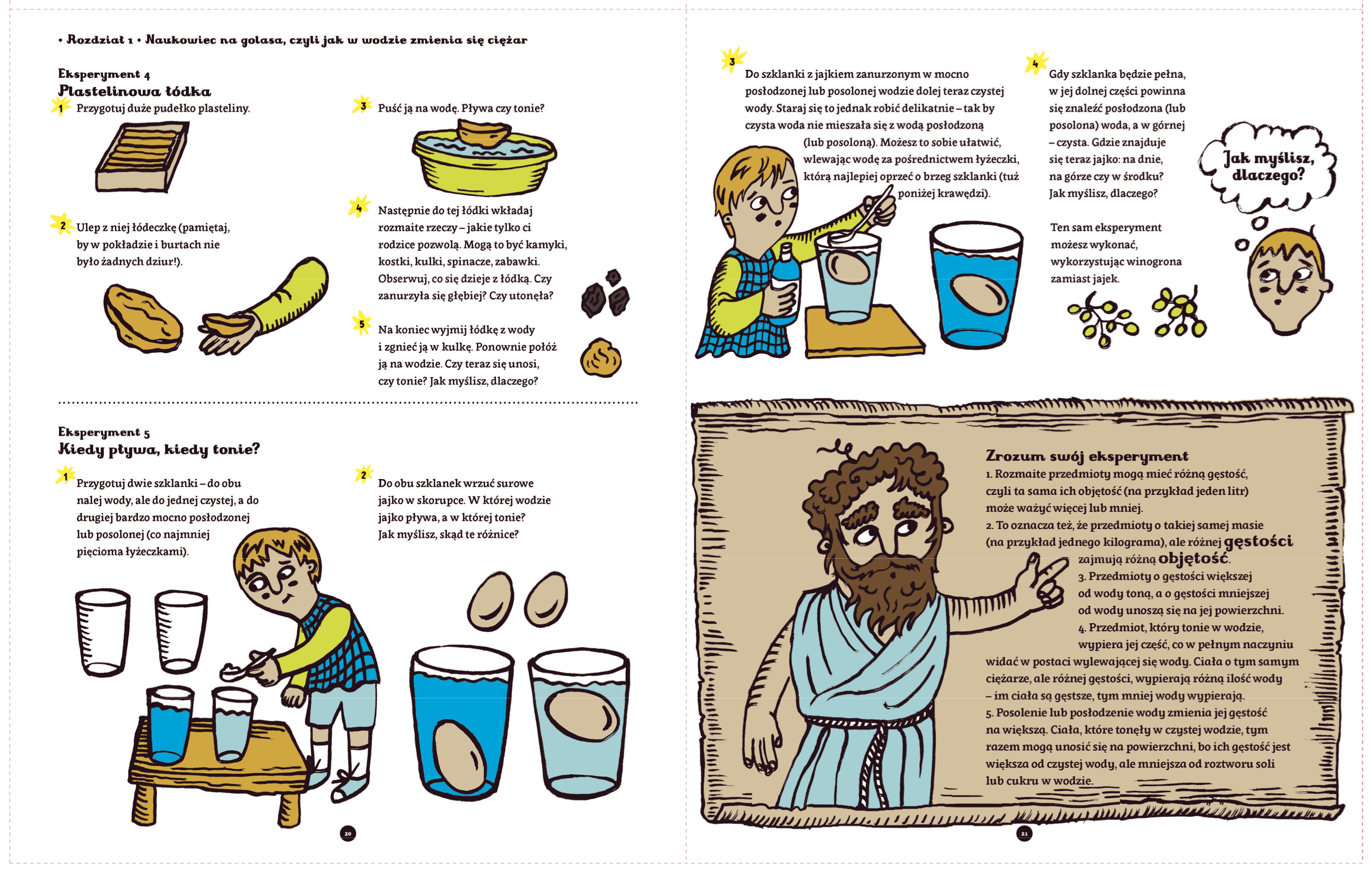
Back Cover (Courtesy of the publisher):
